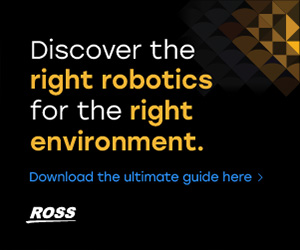Industry Insights: Automation, IP and precision drive PTZ camera innovation

Weekly insights on the technology, production and business decisions shaping media and broadcast. No paywall. Independent coverage. Unsubscribe anytime.
Once viewed primarily as a niche solution, PTZ cameras have become central to modern broadcast operations — delivering high-quality imagery with unmatched flexibility.
In this Industry Insights roundtable, manufacturers discuss how PTZ systems are redefining production efficiency, enabling remote workflows and complementing traditional studio and cinema cameras.
From AI-based auto-tracking and IP-native control to seamless color matching across camera types, today’s PTZs are built to handle complex live environments while keeping crews lean and budgets controlled. The conversation explores how broadcasters are leveraging robotics, networked infrastructure and motion precision to achieve cinematic motion and broadcast consistency — all in increasingly compact and intelligent packages.
Continue exploring this Industry Insights series with discussions on studio cameras, cinema cameras and camera robotics.
Key takeaways from this Industry Insights roundtable
- Automation meets efficiency: AI-driven auto-tracking and robotic control reduce labor demands while maintaining professional image standards.
- Remote-ready operation: PTZ systems enable full remote production control using IP-based protocols like NDI, SRT, and ST 2110, minimizing on-site staffing.
- Seamless image matching: Advanced color-matching tools allow PTZs to blend with traditional broadcast cameras for consistent multi-camera output.
- Infrastructure impact: Compact form factors and single-cable IP operation allow studios to expand camera coverage without expanding footprint or cost.
- Precision in motion: Smooth, sub-degree pan/tilt performance and dedicated VLAN setup ensure natural movement and low-latency control.
What specific benefits do PTZ cameras provide?
Ivy Li, marketing director, Telycam: PTZ cameras with AI-powered auto-tracking can lower labor costs by reducing the number of dedicated camera operators needed, as the system autonomously follows your subjects. Their compact design minimizes physical footprint and avoids bulky tracking equipment, ideal for space-constrained venues such as small studios or temporary stages. By automating repetitive tasks, broadcasters can reallocate resources while maintaining professional-grade coverage with fewer crew and lower hardware investments.
Why choose a PTZ versus a traditional camera for a studio environment?
Hiroto Kato, VP, imaging products and solutions, business planning and strategy, Canon: There are a range of reasons to select a PTZ camera versus a traditional camera for a studio environment, most notably for situations where you need precise remote control across various indoor and outdoor environments for live and pre-recorded cases, and the ability to position the camera where traditionally one cannot fit, as well as the support for single cable operation when IP steaming with power over ethernet support. We see many broadcast and House of Worship customers flocking to the PTZ line in recent years as image quality has drastically improved and been brought up to the high standard these customers need.
Michael Cuomo, VP, Telemetrics (now part of EVS): One key advantage of robotics is their ability to be mounted virtually anywhere in the studio — even in locations inaccessible to human operators. This allows for more flexible placement and makes them less intrusive to both on-air production and the studio environment.
Ivy Li, marketing director, Telycam: PTZ cameras deliver major cost and space-saving benefits for studio setups. With remote pan, tilt, and zoom control, a single PTZ can do the job of multiple fixed cameras — cutting down on expensive multi-camera rigs, simplifying cabling, and enabling camera deployment even in positions where human operators aren’t possible. Their compact, ceiling- or wall-mountable design makes them ideal for space-constrained studios, helping to keep the setup clean and clutter-free compared to traditional bulky systems.
How are broadcasters managing image quality consistency when mixing PTZ cameras with traditional broadcast cameras?
Michael Bergeron, senior product manager, live video production ecosystems, Americas, Panasonic: Many people would be surprised to learn how much broadcast content they watch is captured using high-end PTZ cameras. For years, studios and sports venues have blended the best PTZ footage seamlessly with traditional broadcast cameras using SDI and NDI to maintain signal integrity for high-quality imaging. Companies are also developing PTZ cameras that are fully compatible with studio camera paint controllers and shading tools, so operators can fine-tune PTZ cameras as they would a traditional broadcast camera.
Hiroto Kato, VP, imaging products and solutions, business planning and strategy, Canon: Image quality has to be consistent when mixing PTZ cameras with traditional broadcast cameras, or viewers will notice and tune out in an instant. As production ecosystems at news stations, sports studios and more become more complex and diverse, camera manufacturers like Canon have to consistently roll out new protocols that marry PTZ, traditional broadcast and cinema systems, not to mention integrating with virtual production technologies which have become very common. New applications, like Canon’s Camera Color Matching Application allow the Canon CR-N700 PTZ camera to quickly and easily color match the production’s main camera.
Michael Cuomo, VP, Telemetrics: Our RCCP-2A control panel supports a wide range of professional cameras, enabling operators to match the output across multiple studio cameras with ease. These controls are integrated into a unified interface, making it simple and efficient to manage various camera types from a single panel. It’s a capability we’ve refined and delivered for years.
Ivy Li, marketing director, Telycam: Many PTZ cameras now come equipped with larger sensors and higher-quality lenses, offering significantly improved image quality. They also support advanced image controls such as color profile tuning, white balance adjustment, gamma curve settings, and color matrix — features that provide flexibility for broadcast video production and allow the cameras to be adjusted to look similar to the existing broadcast cameras.
What role do PTZ cameras play in enabling remote production workflows?
Michael Bergeron, senior product manager, live video production ecosystems, Americas, Panasonic: PTZ cameras are essential for remote production as they reduce the need for an on-site crew. Advanced auto framing features are well equipped for remote operation because they allow operators to adjust how the subject(s) are framed while the auto framing system handles camera movement. This setup allows a remote operator to adjust as needed without worrying about network latency, as direct PTZ control is managed locally via the auto framing system.
Hiroto Kato, VP, imaging products and solutions, business planning and strategy, Canon: In terms of the ability to operate remotely while maintaining precision and creating broadcast quality visuals, PTZs have progressed in the last few years to reach a point where we can achieve these characteristics, with the incredible flexibility of a remote ecosystem. With IP enabled control, this allows for easier remote operation where operators can control up to 200 cameras anywhere in the world with the RC-IP1000 controller and cameras can be preconfigured for quick and easier setup for live remote broadcasts. In addition, with the ability to be installed outdoors, PTZ cameras can instantly feed footage from cities, live events, traffic, weather and for news stations.
Michael Cuomo, VP, Telemetrics: Integrating robotic cameras into a network for remote production is becoming increasingly common. With a stable network connection, a camera can be controlled from virtually anywhere in the world. Robotics is what truly enables remote production — without it, the process becomes far more complex. While it’s possible to have someone operate a camera on-site with instructions relayed over audio, this introduces delays and the potential for errors. Robotics streamlines the entire process and eliminates those issues.
Ivy Li, marketing director, Telycam: Broadcast-level PTZ cameras use IP-based control protocols and transport standards like NDI HX3 and SRT to support efficient remote operation and platform integration. This setup enables operators to control pan, tilt, zoom, recall presets, and adjust camera settings in real time — whether from a local control room or a cloud-based production environment.
How has the adoption of PTZ cameras influenced studio infrastructure design and layout?
Michael Bergeron, senior product manager, live video production ecosystems, Americas, Panasonic: There are three categories of change, all of which elevate studio production. This includes adding more cameras to the production to provide unique points of view without increasing the budget, allowing for a higher production value system in a smaller space, and adding a multi-cam live video feed to a venue that was previously audio-only or not covered live.
What technical considerations must broadcasters address for optimal PTZ camera control and precision?
Michael Bergeron, senior product manager, live video production ecosystems, Americas, Panasonic: The most noticeable difference between PTZ camera systems isn’t resolution, noise, or color accuracy, but rather how smooth and natural the camera movements are. The quality of the motion is limited by the weakest link in the system. Engineers should ensure cameras have high-quality servers and that control systems can fully utilize the accuracy of movements, allowing production to fly a camera in a shot without a jarring change in natural movement.
Michael Cuomo, VP, Telemetrics: To ensure low-latency performance and reliable control, it’s important to set up a dedicated VLAN for the robotic systems. This isolates robotics traffic from the rest of the network, reducing the risk of control issues or signal delays. That’s why we always recommend configuring a separate VLAN for robotics.
Ivy Li, marketing director, Telycam: In the multi-PTZ camera setups commonly used by broadcasters, two technical aspects are crucial for achieving consistent and accurate control: protocol compatibility and precise motor movement. While VISCA-over-IP is widely supported, some systems require deeper API integration to ensure smooth operation across different control panels, RCPs, or cloud-based switchers. Motor precision is equally important — cameras capable of sub-degree movement, such as 0.01°/sec, help maintain smooth tracking, particularly when operating at high zoom levels, and reduce the risk of visible motion artifacts in detailed shots.
Anything else to consider on the PTZ front?
Michael Cuomo, VP, Telemetrics: We consider the robotic pan/tilt head to be the core intelligence of the system. That’s why it’s important to choose a solution that offers advanced features like path planning and reFrame talent and object tracking software — which enables facial and object tracking, keyframing, and real-time shot adjustments. When selecting a PTZ system, it’s not just about price. The decision involves evaluating the full range of capabilities and how well the system meets the demands of your production.
Ivy Li, marketing director, Telycam: When deploying PTZ cameras, it’s important to consider future-proof scalability. Even if you’re currently relying on an SDI-based workflow and not yet ready to adopt IP, having IP capability built-in can provide flexibility for future upgrades. As cloud-based production continues to gain momentum, it’s worth aligning with the IP protocol you believe will be most relevant going forward — whether that’s NDI, Dante AV, SMPTE ST 2110, or IPMX.





tags
Canon, EVS, EVS T-Motion, Hiroto Kato, Ivy Li, Michael Bergeron, Michael Cuomo, NDI, panasonic, PTZ, PTZ Cameras, SRT, Telemetrics, Telycam
categories
Broadcast Equipment, Camera Control & Camera Robotics, Camera Tracking, Cameras, Featured, Industry Insights, PTZ Cameras, Voices